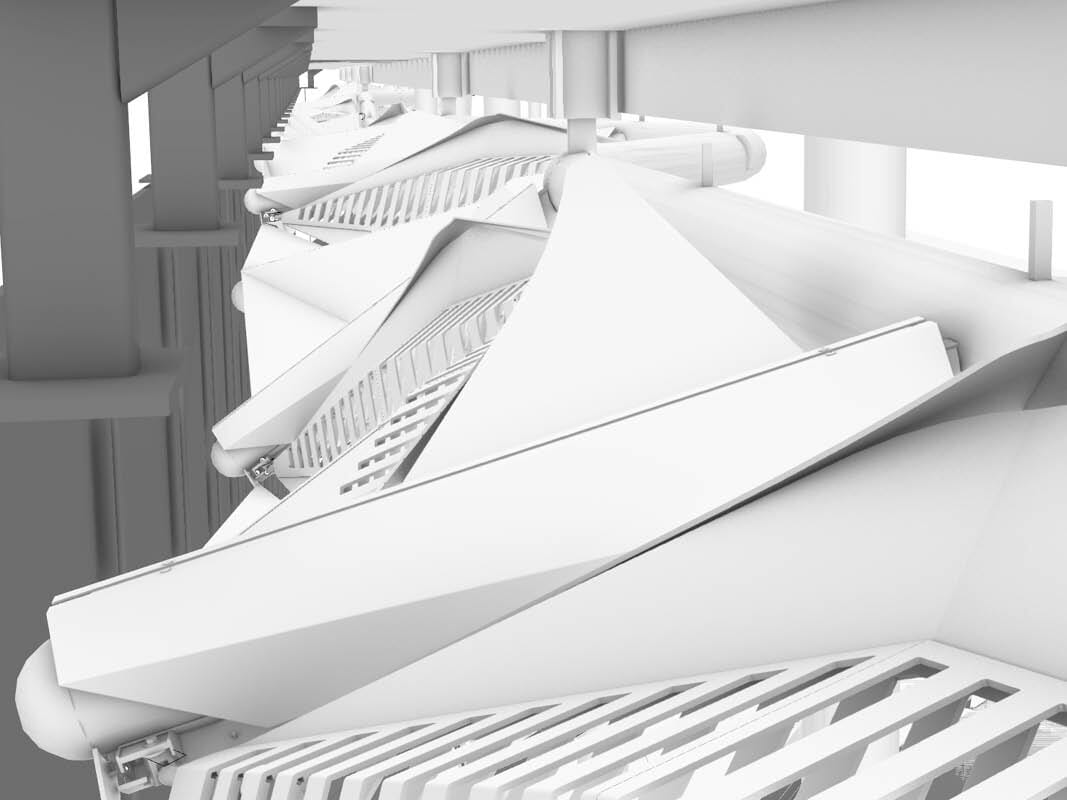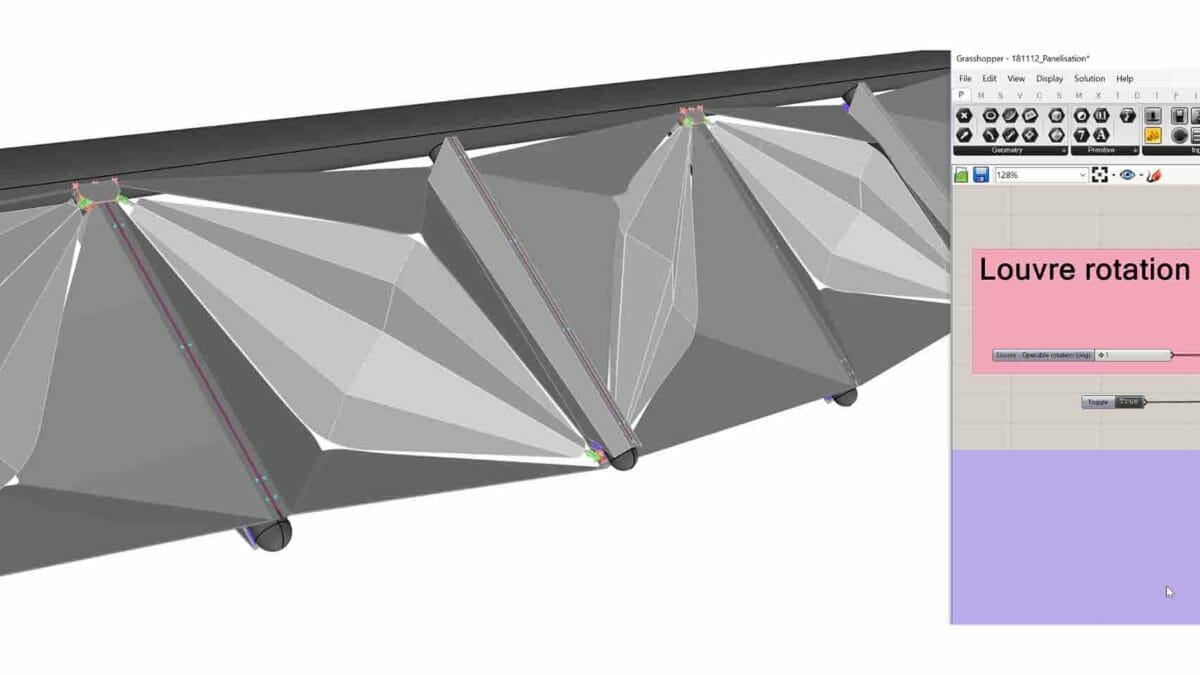-

-
Parametric Modelling: Bridging the Gap between Design Concept and Construction
This year, the Tilt team are working with architects, builders, manufacturers and other technical service teams to create the UTS Central reading room – an FJMT Architects designed project.
-
One of the key collaborators that Tilt is working closely with is Paul Wintour from Parametric Monkey. We sat down with Paul to better understand parametric modelling and digital fabrication and discuss his part in this exciting project.
What is Parametric Modelling and Digital Fabrication?
Parametric modelling is the creation of a digital model that helps improve the way buildings are designed and built. When combined with design-to-fabrication workflows, it closes the gap between the digital model and the physical construction process. This entire process is known as digital fabrication.
As Paul explains it, an algorithm is written based on a set of rules. This algorithm, known as a ‘script’, is created based on a rigorous design methodology and shows how a building, based on these rules, will look. Once the algorithm has been written, the value of the variables can
-
be adjusted and those changes will be reflected in the model of the building. Using parametric modelling, Paul explains, “accelerates traditionally complex modelling processes and allows exploration of ideas to move on quickly if a design is not going to work.”
How does it help?
For this particular project, parametric modelling serves as a strong link between the architect and the Tilt team. fjmt are renowned for their geometrically interesting building forms and Tilt are experts in industrial manufacturing, bringing the architects’ designs to life.
The UTS Central project has a layer of geometric complexity with many non-standard elements that would take months of man hours to design, document and manufacture. Parametric modelling speeds up the process to enable a faster construction process, minimise resources, and use material-specific design solutions.
-

-

-
The sunshades on the UTS Central reading room are geometrically derived via a set of rules and the parametric modelling process further refines the design to include detailed elements such as the fixings, material joints, and motorised components. The script automatically propagated the inherent rules to all of the other sunshade bays within the design. This process now takes weeks instead of months and by incorporating the architect’s original script, there is no loss of design intelligence – maintaining the design intent, which is always Tilt’s goal.
Parametric Monkey
As a digital design consultancy, Parametric Monkey allows different companies both big and small, to access digital design expertise that may otherwise be unavailable or difficult to access. As a registered architect specialising in computational design, Paul identified limits in digital design literacy within the architectural industry and launched Parametric Monkey in February 2018 to address this issue. Now working with architects, engineers, manufacturers, developers and governments, Parametric Monkey focuses on bridging the gap between buildings and technology.
Tilt worked in partnership with Parametric Monkey on the design feasibility stage of the UTS Central project to assist with ensuring the architect’s vision could come to fruition.
Parametric Modelling Outcomes
The outcomes of the modelling process benefit all stakeholders of a project such as this.
For the architect, their design intelligence is upheld. Although design development is passed on to the Tilt team for manufacture, the design intent is maintained. For the client, a Building Information Model (BIM) is supplied which outlines all specifications of the model including manufacturer information, warranties, user manuals and other data allowing efficient facilities management after the building has been completed.
For Tilt, the modelling process provides sheet metal cutting plans that are then checked and verified before each element is manufactured. The architect’s origami-like design is automatically ‘unfolded’, generating 2D shop drawings that include dimensions and annotations, with geometric accuracy, providing confidence the unique form and pattern can be manufactured to design specifications.
Utilising the latest technology services such as those provided by Parametric Monkey as well as proven design methodologies and processes means creative freedom is upheld and, as Paul Wintour says, helps “not just to do things better, but to do better things”.
-
Latest news and insights
-
Enquiries
New business — studio@tilt-industrialdesign.com
Careers — studio@tilt-industrialdesign.com
Press & media — marketing@tilt-industrialdesign.com
We acknowledge the Traditional Owners of Country throughout Australia and their continuing connection to land, waters and community. We celebrate the value and diversity of First Nations art forms, cultures and languages, and their ongoing significance today. We pay respect to Elders past and present.